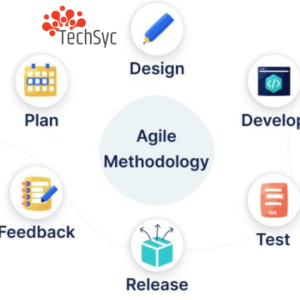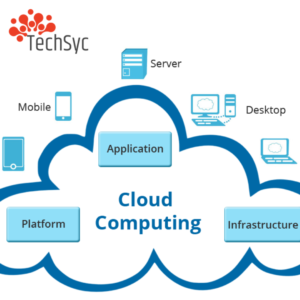” Efficiency Unleashed: Embracing Top Trends For Innovative Application Development”
Application development is an integral part of modern business success. As technology and user expectations evolve, staying ahead of the curve is critical. In this blog post, we’ll explore some of the top trends in application development that can help you maximise effectiveness and produce innovative results for your guests.
1.The significance of innovative application development 
In the moment’s fleeting changing business geography, the significance of innovative application development can not be exaggerated. It’s no longer enough to simply have a functional application; companies must strive to stay ahead of the wind and give their guests slice- edge results that enhance their guests . One of the crucial reasons why innovative application development is pivotal is because it enables businesses to separate themselves from their challengers.
In a crowded business, where products and services are decreasingly analogous, it’s frequently the quality of the stoner experience that sets a company piecemeal. By constantly pushing the boundaries of what’s possible with application development, businesses can produce unique and memorable guests for their guests, leading to increased client satisfaction and fidelity. Innovative application development also allows businesses to address evolving client prospects.
Technology is advancing at an unknown pace, and guests are decreasingly demanding more individualised, intuitive, and codeless guests . By embracing innovative development practices, businesses can more understand and respond to these prospects, creating applications that are acclimatised to their guests’ specific requirements and preferences. Likewise, innovative application development can significantly ameliorate functional effectiveness.
Also, innovative application development fosters a culture of nonstop enhancement within an association. By constantly exploring new technologies, tools, and ways, businesses can encourage their brigades to suppose creatively and challenge the status quo. This not only drives invention but also empowers workers to take power of their work and find innovative results to complex problems.
2.Top trends for effective application development
In the fast- paced world of application development, staying on top of the rearmost trends is pivotal for maximising effectiveness. Then are some of the top trends that are revolutionising the way applications are developed
- DevOps: DevOps is a collaboration between development and applications brigades to streamline the development process and ensure nonstop delivery of high- quality applications. By breaking down silos and promoting collaboration, DevOps enables briskly development cycles, better quality control, and increased effectiveness.
- Artificial Intelligence and Machine Learning: AI and ML are transubstantiation application development by enabling intelligent robotization and prophetic analytics. With AI- powered tools, inventors can automate repetitive tasks, optimise algorithms, and enhance stoner gests . ML algorithms also enable applications to learn from stoner relations and acclimatise to their preferences, perfecting effectiveness and personalization.
- Progressive Web applications( PWAs): PWAs are a mongrel of websites and native mobile applications, offering the stylishness of both worlds. They’re created using web technologies like HTML, CSS, and JavaScript but have the look and sense of a native app. PWAs are largely effective as they can work offline, cargo snappily, and give a fcodeless stoner experience across bias.
- Serverless Architecture: Serverless armature eliminates the need for traditional garçon application by outsourcing it to all providers. This allows inventors to concentrate solely on rendering, without fussing about structure conservation. Serverless applications gauge automatically grounded on demand, reducing costs and perfecting effectiveness.
- Internet of effects( IoT): IoT refers to the network of connected physical bias that can change data. As IoT continues to grow, application inventors are exploring ways to work its eventuality. From smart home robotization to artificial monitoring systems, IoT applications are perfecting effectiveness by collecting and assaying real- time data.
- Containerization: Containers give a featherlight and movable way to package applications and their dependencies . By recapitulating applications in holders, inventors can insure thickness across different surroundings, accelerate deployment, and simplify scalability.
By embracing these top trends, businesses can streamline their development processes, ameliorate effectiveness, and deliver innovative applications that meet the evolving requirements of their guests. It’s essential to stay ahead of the wind in the fast- paced world of application development, and these trends are paving the way for a more effective and effective future.
3.Agile methodology and how it boosts effective
Agile methodology is a game- changer when it comes to boosting effectiveness in application development. It’s a cooperative and iterative approach that breaks down complex systems into lower, manageable tasks, allowing brigades to work more efficiently and deliver high- quality applications briskly. One of the crucial benefits of agile methodology is its emphasis on inflexibility and rigidity.
Traditional development methodologies frequently follow a direct, cascade approach, where conditions are defined outspoken and changes are delicate to incorporate once the development process starts. Still, agile methodology embraces change and welcomes feedback throughout the development cycle. This allows for further frequent and meaningful relations between inventors, stakeholders, and end- druggies, performing in better alignment and bettered effectiveness.
In agile methodology, systems are divided into short duplications called sprints. Each sprint generally lasts for one to four weeks, and at the end of each sprint, a working prototype or a deliverable proliferation is produced. This iterative approach enables brigades to continuously admit feedback and make necessary adaptations along the way, icing that the final application meets the evolving requirements and prospects of the guests.
Also, agile methodology promotes collaboration and effective communication among platoon members. Through diurnal stage-up meetings, brigades can snappily identify and address any challenges or blockers, allowing for prompt resolution and a nonstop inflow of work.
4.Microservices architecture and its impact on efficiency
Microservices armature is revolutionising the world of application development and having a significant impact on effectiveness. Traditional monolithic applications are being replaced by a further modular approach, where applications are broken down into lower, independent services. This shift to microservices armature brings multitudinous benefits that enhance development effectiveness. One of the crucial advantages of microservices armature is its capability to promote scalability.
By breaking down applications into lower, concentrated services, inventors can gauge each service singly grounded on demand. This allows businesses to allocate coffers more effectively and optimise performance, without the need to gauge the entire application. With traditional monolithic applications, spanning frequently involves spanning the entire application, leading to gratuitous resource consumption and slower response times.
Also, microservices armature enables briskly development cycles and increased dexterity. With each service being developed singly, development brigades can work on different services coincidently, reducing dependencies and allowing for resemblant development. This not only pets up the overall development process but also makes it easier to make changes and updates to specific services without impacting the entire application.
Likewise, microservices armature facilitates a more modular and flexible approach to development. inventors can choose the most suitable technology mound for each service, allowing for lesser inflexibility and invention. This modular approach also makes it easier to borrow new technologies and integrate third- party services or APIs. inventors can concentrate on creating small, technical services that are optimised for specific tasks, performing in cleaner codebases and easier conservation.
5.Cloud computing and its benefits for application development
Cloud computing has revolutionised application development by furnishing businesses with scalable, flexible, and cost-effective results. With cloud computing, applications and data are stored and penetrated ever, barring the need for on- demesne structure. This technology offers a multitude of benefits for application development, enhancing effectiveness and enabling businesses to stay ahead of the competition.
One of the crucial benefits of cloud computing for application development is scalability. With cloud- grounded structure, businesses can fluently gauge their applications to meet growing demands. Whether it’s an increase in stoner business or a need for fresh storehouse capacity, cloud computing allows for codeless scaling without the need for expansive tackle investments. This inflexibility enables businesses to snappily acclimatise to changing request conditions and client requirements, icing optimal performance and stoner satisfaction.
Another significant advantage of cloud computing is its cost- effectiveness. Traditional on- demesne structure requires businesses to invest in precious tackle, conservation, and ongoing upgrades. Cloud computing, on the other hand, follows a pay- as- you- go model, allowing businesses to only pay for the coffers they use. This enhances communication, streamlines workflows, and reduces development time.
Likewise, cloud- grounded applications can be penetrated from anywhere, at any time, and on any device with an internet connection. This promotes productivity and allows businesses to work ever, furnishing inflexibility for inventors and perfecting time- to- request. Security is another pivotal aspect of application development that cloud computing addresses effectively.
6.Low-Code development and its efficiency benefits
Low-code development is a game- changer when it comes to boosting effectiveness in application development. With low- code platforms, inventors can snappily make and emplace applications with minimum coding, significantly reducing development time and trouble. One of the crucial benefits of low- code development is its simplicity and ease of use.
These platforms give intuitive visual interfaces, drag- and- drop functionality, and pre-built templates and factors, allowing inventors to produce applications without the need for expansive rendering knowledge. This empowers businesses to snappily prototype and test ideas, reiterate on feedback, and deliver applications briskly than ever ahead. Low- code development also enhances collaboration and productivity. With its visual and stoner-friendly nature, low- code platforms enable inventors, contrivers, and business stakeholders to work nearly together throughout the development process.
This promotes effective communication, accelerates decision- timber, and ensures that the final application meets the conditions and prospects of all stakeholders. Also, low- code development promotes reusability and maintainability. These platforms frequently include a depository of pre-built modules, workflows, and integrations that can be fluently reused across multiple applications. This reduces development trouble and enhances effectiveness by barring the need to resuscitate the wheel for every design.
Low- code platforms allow businesses to empower citizen inventors, individuals with little or no coding experience, to make and contribute to the development process. This not only expands the pool of available inventors but also enables brigades to work sphere moxie and creativity from non-technical stakeholders. Likewise, low- code development enables rapid-fire replication and dexterity. With its visual interfaces and modular nature, low- code platforms make it easy to make changes and updates to applications on the cover.
Conclusion :
In conclusion, the world of application development is constantly evolving, and staying ahead of the wind is essential for businesses looking to maximise effectiveness and deliver innovative results to their guests.
By embracing top trends similar as innovative application development, DevOps, artificial intelligence and machine literacy, progressive web applications, serverless armature, Internet of effects, containerization, agile methodology, microservices armature, cloud computing, and low- code development, businesses can streamline their processes, ameliorate effectiveness, and produce applications that meet the evolving requirements and prospects of their guests.
Also Read: Reputed Website Development Company In Russia
Also Read: Difference between a content writing agency and a content marketing agency

